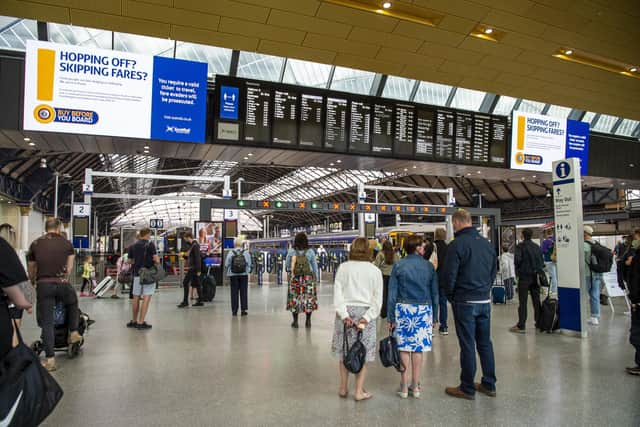‘Incredible’ 40% fall in ScotRail commuting likely to have permanent impact and could change timetables – rail chief Alex Hynes
and live on Freeview channel 276
Alex Hynes, managing director of Scotland’s Railway, which comprises ScotRail and track body Network Rail Scotland, said timetables may need to be revamped to reflect changing travel patterns, with Saturday now ScotRail’s busiest day of the week.
He said the major reduction in commuting had reduced revenue by 20 per cent. That would be the equivalent of around £80 million, based on ScotRail’s pre-pandemic total revenue, which includes other commercial income, of nearly £400m.
Advertisement
Hide AdAdvertisement
Hide AdMr Hynes told the online Annual Scottish Rail Conference: "The pandemic had an enormous impact on customer numbers and revenue, and likely will do for ever. At the height of lockdown, our revenue was down by 92 per cent.


"There have been signs of recovery at certain times, but the changing nature of the restrictions through the pandemic has established different work and social norms. Some of these have changed, but the shift in passenger travel and patterns remains and our numbers reflect that.
"Passenger numbers, and therefore revenue, remain significantly down on what they were in 2019. This has been driven by a huge fall in usage during commuter peaks.
"Prior to Covid, we moved huge numbers of people to and from city centres for work at peak times, Monday to Friday, nine ‘til five. But given the increase in hybrid and flexible working, where the take up has been stronger here in Scotland than other parts of the UK, our peak demand remains around 40 per cent below 2019 levels – an incredible change.
Advertisement
Hide AdAdvertisement
Hide Ad"We have seen good recovery in the leisure market, where people are generally travelling off peak and at less fixed routine, and our services and ticketing need to reflect these new travel patterns. The significant cost of running the railway post-pandemic means it’s essential to meet the changing needs of customers as well as providing the taxpayer with the best value for money.
"That might mean offering a different service on different days of the week or at different times of the year as passenger demand varies across the week or through the year. If our revenue has dropped by 20 per cent, then clearly we need to look at our costs.”
Additional pressures include energy costs, with Network Rail – the largest electricity buyer in Britain – facing an energy bill increasing from £670m this year to more than £1 billion next year.
ScotRail said later it had no specific proposals for changing the timetable, which it said had sufficient capacity to meet pre-pandemic demand levels even though it comprises around 10 per cent fewer services a day, or some 250, than before Covid.
Advertisement
Hide AdAdvertisement
Hide AdCatherine Hall, Network Rail Scotland’s head of strategic planning, agreed with the challenge being faced by greater home working. She told the conference that rail now had a new competing mode: “Not to travel”.
Comment Guidelines
National World encourages reader discussion on our stories. User feedback, insights and back-and-forth exchanges add a rich layer of context to reporting. Please review our Community Guidelines before commenting.